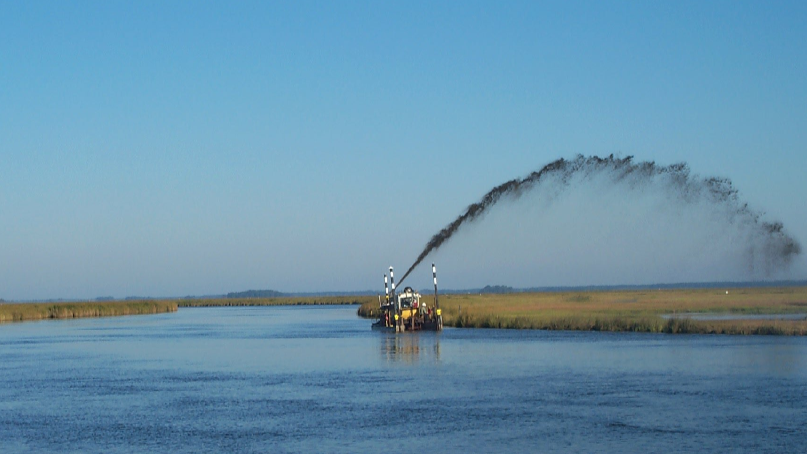The fresh water marshes of Currituck Sound are vital for birds and people alike, providing globally important habitat for waterfowl and serving as a water filtration and erosion control system for communities. But these same wetlands are also facing intense pressure from rising seas and encroaching development.
That’s why Audubon is undertaking a series of marsh restoration pilot projects at our Donal C. O’Brien, Jr. Sanctuary at Pine Island. Thanks to funding from the National Fish and Wildlife Foundation’s National Coastal Resilience Fund, the final design of the projects is starting to take shape.
The work should help stem erosion and even build back the marsh in places that need it most. A recent analysis looking at historic and present-day images found that, over the last 50 years, the marsh had receded by more than 300 feet in some of the most severely affected portions of the project area.
The work is part of a broader Marsh Conservation Plan developed by Audubon and the Currituck Sound Coalition, with the ultimate goal of protecting and reviving marsh habitat in this fast-changing ecosystem.
As we prepare to step into the next phase of this project, here’s a deep dive into what it will look like.
Using Christmas trees to reduce erosion
For this pilot project, we’ll be installing pilings in the water in front of marsh islands. Pine trees will then be placed in between the pilings, creating a buffer that helps absorb wave energy before it reaches the marsh.
This technique is beneficial because it uses natural material and allows sediment to move through the buffer. It has been tested through formal, permitted projects on barrier islands in North Carolina and has been used to successfully protect marshes along the Gulf Coast. It also presents an opportunity to engage community members in recycling their Christmas trees.
The traditional approach: coir logs
Coir logs are made of woven, biodegradable material and resemble a rolled up carpet. Setting coir logs on bare mud just in front of marsh islands can help to dampen the force of waves. This is a standard and cost-effective erosion control technique.
Like the Christmas tree breakwater project, this project will take place on the eastern side of the sound. For both, we’d like to see sediment accumulate behind the buffer, eventually supporting new marsh grass growth. But even if that doesn’t occur, the projects should help control erosion of what’s already there.
The question for the coir logs and the Christmas tree breakwater is how well they will hold up to strong winds and storms on the sound. These pilot projects will give us a clearer idea of what to expect.
Rebuilding the marsh from the mud up

The most innovative technique we’re undertaking is called thin-layer placement, which involves dredging sediment from one area and applying it in thin layers on the marsh surface. The goal is to literally rebuild the marsh in places where it has disappeared.
This project will take place at two sites on the western side of the sound, in areas of the marsh that suffer from “ponding.” Ponding occurs when rising water levels slowly drown interior areas of the marsh over time.
Thin-layer placement has only been tried at a few small-scale marsh restoration projects in the state. However, this technique has been used successfully in other states like New Jersey and Louisiana. Our goal is to compare its effectiveness and cost with other restoration techniques in North Carolina.
Investigating the threat of an invasive swamp rodent
If you spend enough time on Currituck Sound, you’ll get a glimpse of large rodents swimming across narrow channels in the marsh, their snouts raised just above the water. These are nutria, a species that is native to South America and is a larger relative of the muskrat.
Nutria are considered an invasive species in Currituck Sound. As they move through the marsh, foraging and eating the roots of grasses, they leave a network of deeply cut paths in their wake that further intensify marsh loss to sea level rise. We’re taking a preliminary look at how the nutria might impact marsh restoration efforts by installing fencing around some of our thin-layer sediment sites, while keeping others as control sites.




